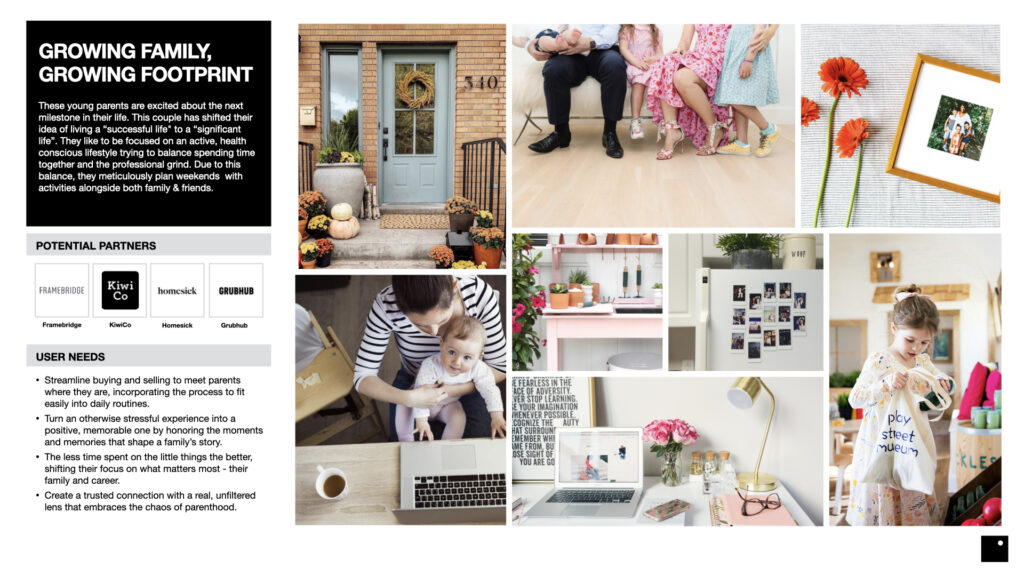
Creating Personas That Matter
We’ve all seen a bad customer persona. You know the ones. “Chloe. 30 years old. Speaks English. Works as a vet. Buys on a budget. Favorite content: video and imagery.” The ones like this that hit a cringe spot – and funny bone – all at once.
What the heck do you do with a persona like that? As a marketer, as an innovator, as a decision maker of any kind – there is only so much demographics can do to help drive content creation, revenue, or even brand awareness (unless you’re selling a budget friendly dog food for vet offices via Instagram Reels).
That being said, a good customer persona can make a huge impact in an organization. There is a fine balance between too much nuance and too little, but when decision makers are empowered by the goldilocks ‘just right’ persona – it makes everything infinitely easier.
Why Now?
Think back to three years ago. Since then, has your wardrobe changed? Have your eating habits changed? Have your hobbies changed? Has your living situation or even the size of your family changed? If you answered yes to any one of those questions and you’re a leader working with customer insights of any kind from 2019 or earlier – it’s time to revisit those guiding data points because we guarantee your customers’ lifestyles have changed just as much as yours.
Identifying customer personas has always been a valuable exercise, but coming out of a pandemic time warp, it has become even more essential. We all have reshaped our values, our priorities, and behaviors. Consumer habits have transformed as individuals adapt to new realities and cope with unprecedented challenges. Companies that fail to recognize these shifts risk losing touch with their audiences and, ultimately, their market relevance.
Why Even Bother With Personas?
Well, friend, because at the end of the day how else are you making customer-related decisions? Because you think it looks good? Sounds good? Just because you like it? Truth be told, you may fit into one of your target personas, but there’s also a good chance you don’t. And if you don’t, then you’re just making decisions for a single person instead of based on the hundreds, thousands, tens of thousands of customers you need.
Personas, when done right, give businesses invaluable insights into the evolving needs, desires, and pain points of specific customer types. Personas based on data and psychographics positioned with actionable insights enable companies to tailor their products, services, and communications to meet the evolving expectations of their customers, ensuring they remain relevant in this rapidly changing world.
Long story short, a good great persona should do all of the following: inspire innovators to invent desirable products, inspire marketers to craft resonating language, inspire sales teams to pinpoint the right purchaser, and inspire designers to design with impact. A great persona should do all of this without any nebulous “am I interpreting that right?” worries.
Why Not Just Learn From Family & Friends?
Yes, we know, gathering a group of family and friends (even the ones that “don’t think like you”) is surface level easy and insightful. But as we learned in 2020, we tend to surround ourselves with people who look and act most like us. We also tend to surround ourselves with people who care about us, and because of that, have a hard time saying “your idea needs some serious work”.
One critical aspect that companies need to address is the representation of underrepresented voices in their decision-making processes. We have to get out of the surround sound of like minded voices. And historically marginalized groups, including ethnic minorities, the LGBTQ+ community, individuals with disabilities, and other marginalized communities, have often been overlooked or underrepresented in corporate decision-making. This lack of representation can result in products and services that fail to meet the diverse needs of these communities, perpetuating inequities and limiting opportunities for not only your customer’s – but your company’s growth.
If any of this is resonating, please let this be your sign to do something different. Challenge your own biases. Uncover fresh ideas. Foster innovation. And do so by actively including underrepresented voices into your decision-making processes. Ensure that a wider range of perspectives and experiences are taken into account when shaping strategies and designing experiences. Go beyond simple tokenism to genuinely understand and empathize with the unique challenges and aspirations of diverse audiences. And do so by prioritizing your personas.
So Where Does One Even Begin?
You start with data. You start by uncovering the demographics of your current customers, and perhaps more importantly, the demographics of those who don’t currently purchase from you. You merge that data with trend research. You merge both of those data points with behavioral psychographics. And then you start to paint a picture of varying types of people, their lifestyles, their desires, and how they connect with brands like yours.
For every persona, you identify the ‘so what’s’ and the ‘opportunities’ related to your brand. You identify messaging tactics. You identify channels for communication. You identify how you can tweak your offering to better align with their needs.
Or, you call PinPoint.
Either way, please start looking beyond your walls. Please revisit old personas. And please make space at the table for your customers to be part of the conversation. If they keep you afloat, they deserve a voice… and if nothing else a persona that matters to them.